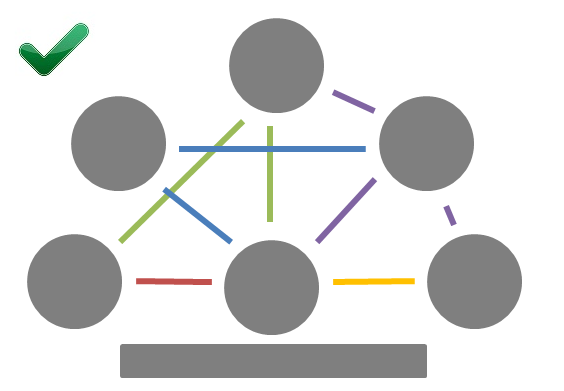The pattern
I like the idea of holding a daily stand-up meeting. This involves a team coming together at the start of each day to provide brief status updates and discuss the challenges ahead.
I see stand-ups as being particularly useful in helping to resolve issues that are blocking progress, such as in this fictional exchange:
Pete: “I could complete X today but Y is holding me up.”
Sue: “Well I can make Y my top priority but this will hold up Z.”
Rob: “No problem, I can wait a little longer for Z, let’s get X and Y finished today.”
Getting Pete, Sue, Rob, and any other stakeholders, to come to this agreement could have taken much more effort if they had not been standing next to each other.
The communications channels in this type of stand-up can be visualised as in the following pattern.

The anti-pattern
However I believe that stand-ups are not well suited to all projects, and that they can actually become a daily energy drain on the team if used ineffectively.
My own experience has shown this to be the case when team members are loosely-coupled; that is they do not rely on each other in their normal day-to-day activities. On these projects the stand-up becomes a series of one-to-ones between each team member and the lead engineer, for which the whole team are forced to be present.
The communications channels in this type of stand-up can be visualised as in the following anti-pattern.

Conclusion
Stand-ups that embody the communications pattern provide a real energy boost as team members work together to solve problems; stand-ups that embody the communications anti-pattern become a drain on energy as team members struggle to remain focused.
If your daily stand-up meetings regularly look like the anti-pattern then I would suggest an intervention is needed. Perhaps another method of getting status updates would be more appropriate, such as individual one-to-ones, or asking team members to provide status updates by email.
Jason Yip has provided a much more detailed look into the daily stand-up meeting in his 2011 article, with the anti-pattern above being briefly introduced as Reporting to the Leader.
I hope that by making this anti-pattern visual, even a casual observer will be able to quickly determine whether or not a stand-up is adding value to the project.
DW.